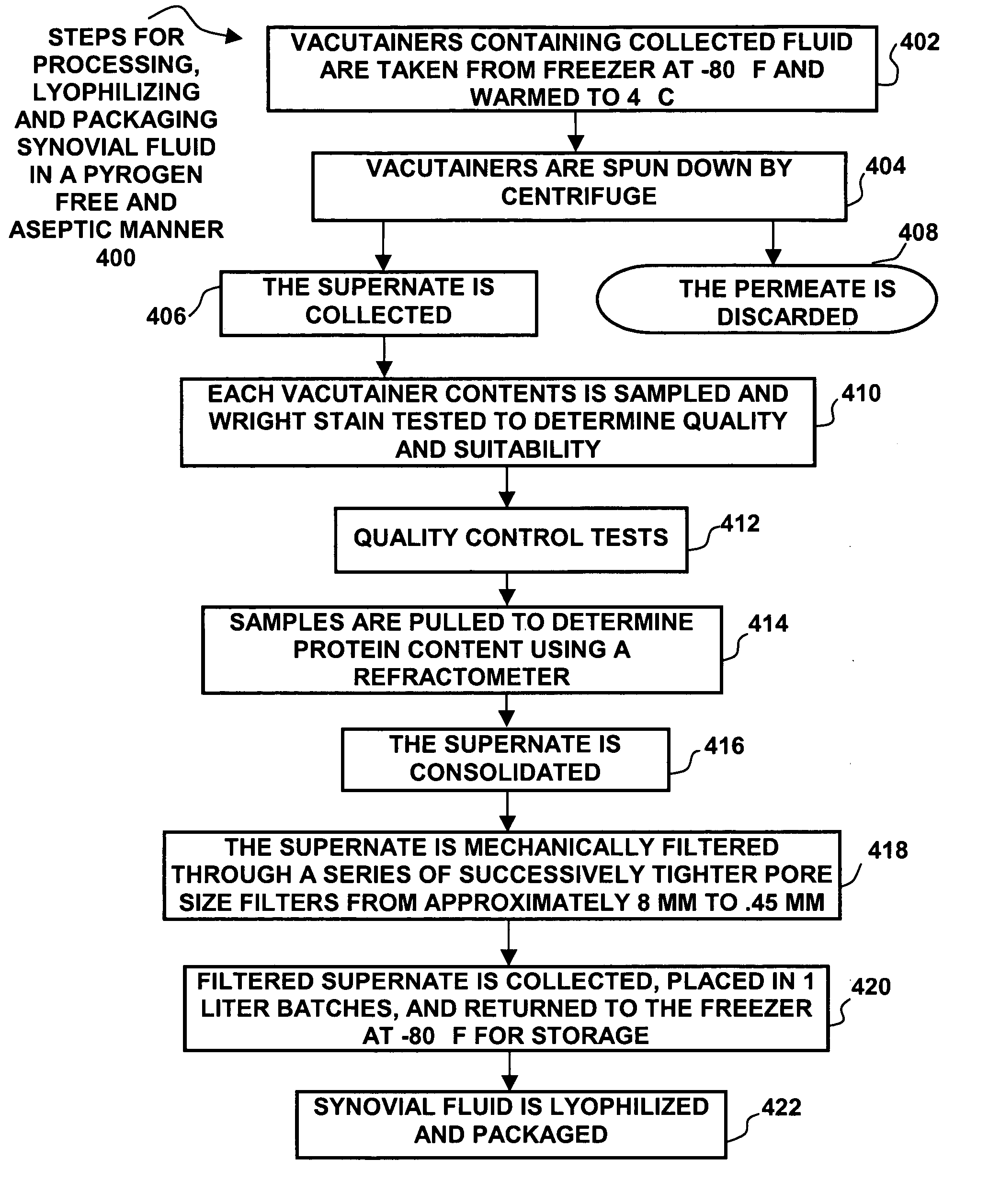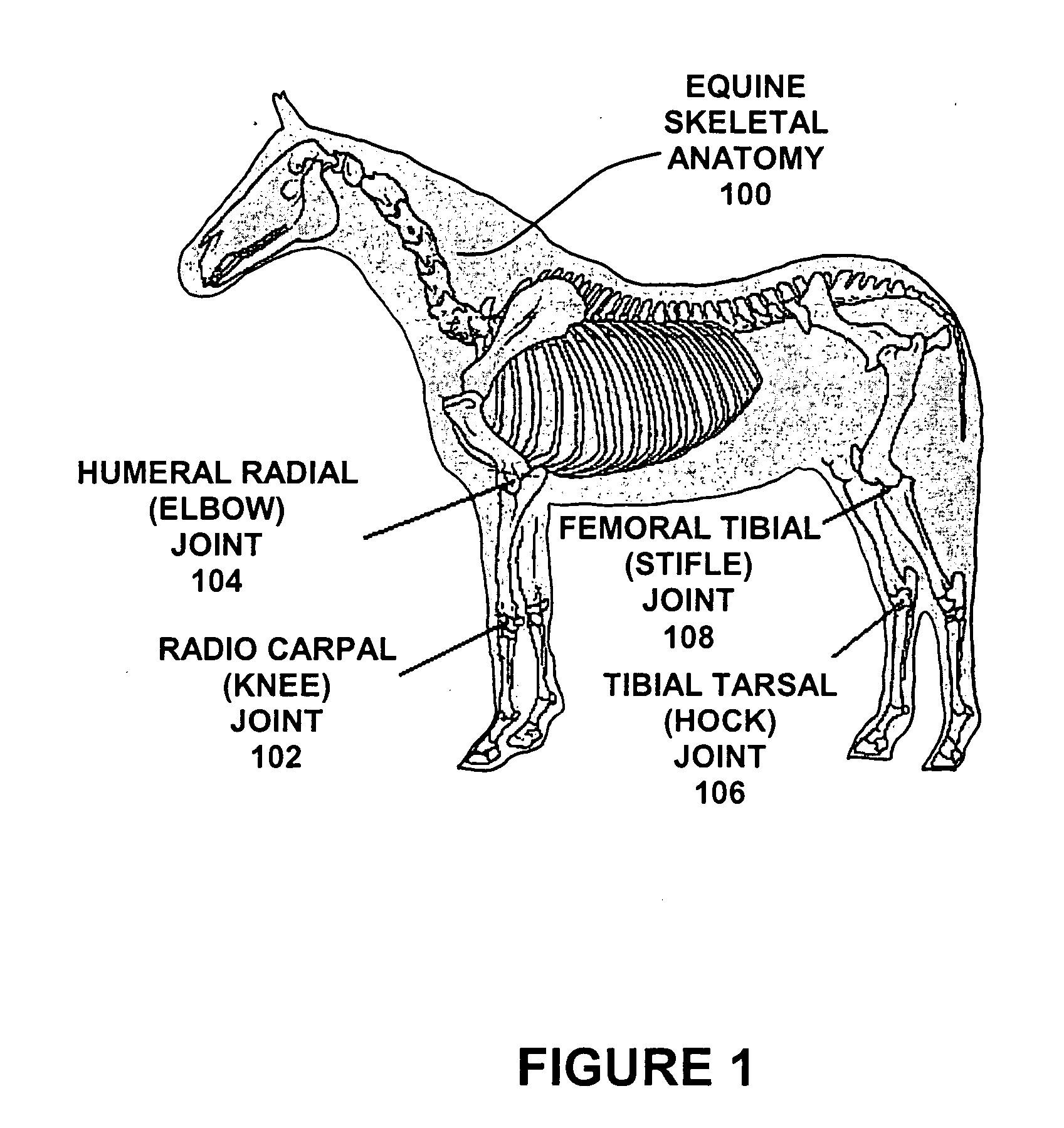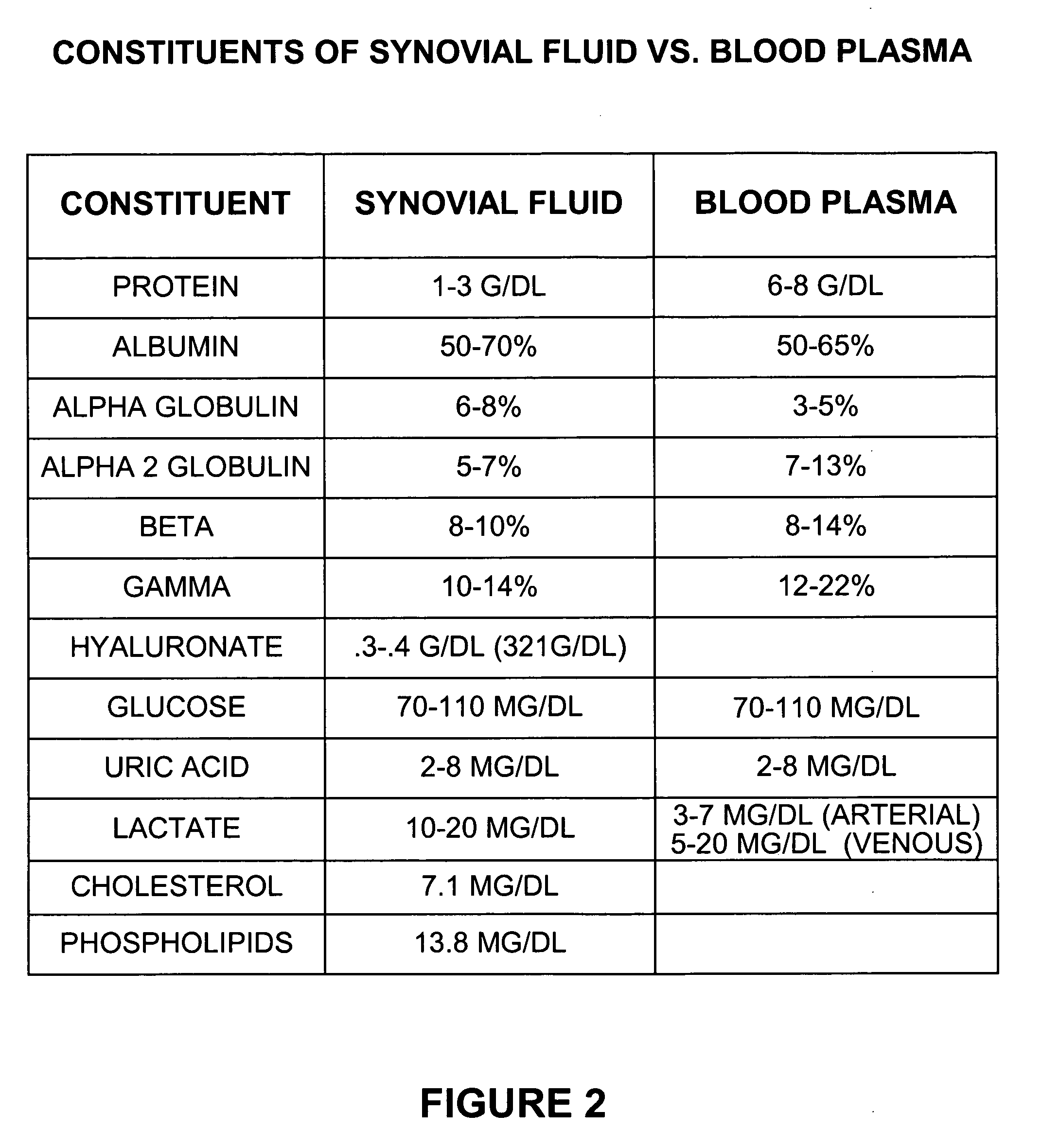Method of treating mammalian joint maladies by biological fluid transplantation
a biological fluid and mammalian joint technology, applied in the direction of skeletal disorders, medical preparations, pharmaceutical delivery mechanisms, etc., can solve the problems of limited success, limited success, and inability to assist one joint at the expense, and achieve the effect of easy re-injection and long shelf li
- Summary
- Abstract
- Description
- Claims
- Application Information
AI Technical Summary
Benefits of technology
Problems solved by technology
Method used
Image
Examples
Embodiment Construction
[0020] While this invention is susceptible to embodiment in many different forms, there is shown in the drawings and will be described herein in detail specific embodiments thereof with the understanding that the present disclosure is to be considered as an exemplification of the principles of the invention and is not to be limited to the specific embodiments described.
[0021]FIG. 1 is drawing showing the equine skeletal anatomy displaying typical harvest sites for donor synovial fluid. Typically, but not by way of exclusion, both radio carpal (knee) and humeral radial (elbow) joints on the forelimbs, and both tibial tarsal (hock) and femoral tibial (stifle) joints are harvested. These joints are the most accessible and yield the most fluid at approximately 5 cc of synovial fluid per joint.
[0022]FIG. 2 is a table showing the constituents of synovial fluid versus blood plasma. Synovia is the fluid present in certain joints that are consequently termed “synovial.” Similar fluid is pr...
PUM
 Login to view more
Login to view more Abstract
Description
Claims
Application Information
 Login to view more
Login to view more - R&D Engineer
- R&D Manager
- IP Professional
- Industry Leading Data Capabilities
- Powerful AI technology
- Patent DNA Extraction
Browse by: Latest US Patents, China's latest patents, Technical Efficacy Thesaurus, Application Domain, Technology Topic.
© 2024 PatSnap. All rights reserved.Legal|Privacy policy|Modern Slavery Act Transparency Statement|Sitemap



